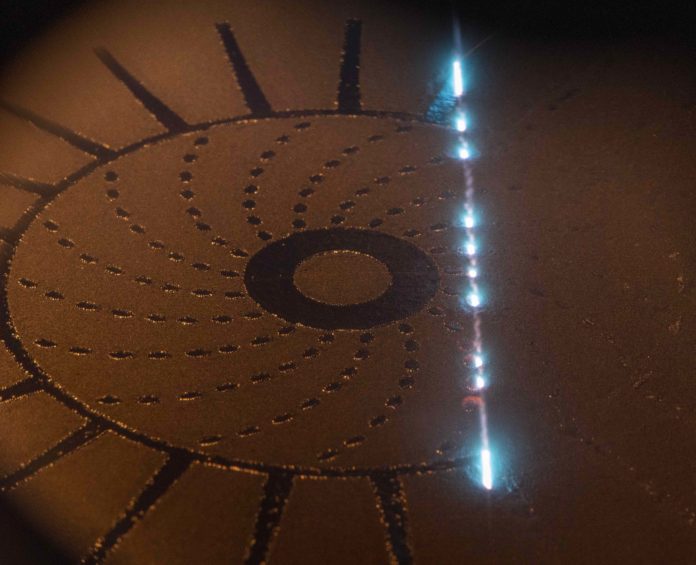There is so much to discover about metal additive manufacturing, that year on year, several investments continue to be made in R&D activities across all key industrial sectors. The truth is, the more companies will observe a technology limitation, the more they will look for solutions to address it.
In this vein, an analysis of the most commonly used metal AM process, the powder bed fusion (PBF) approach, has enabled Wayland Additive to bring an alternative, which, as per the words of the CEO, Will Richardson, “greatly reduces the requirement for compromise.” That’s what they describe as the “3rd” Way with the PBF Process.
What makes laser and eBeam unique for PBF and what limitations led to Wayland Additive’s solution
Wayland Additive is a UK-based company which pushes the boundaries of electron beam 3D printing. The whole research started with what makes laser and eBeam unique for PBF.
First, as a reminder, laser PBF is acknowledged as a stable process, that can process a relatively broad range of metal materials. It consists in the melting of powdered metals and alloys to form accurate and functional metal components whereas the eBeam PBF process is known for exhibiting favourable energy transfer physics. The process delivers fewer issues concerning residual stress than laser PBF.
By comparing their uniqueness, Wayland Additive found out that “the most obvious difference between the two is the heat source used to melt the metal powder, indicated in the process names. Laser PBF typically utilizes a high powered 200-400-watt Yb-fiber optic laser (or series of lasers), while traditional EBM uses an eBeam in the region of 3–6 kW and a magnetic field to direct the beam. The very nature of the eBeam requires that the process occurs under vacuum, because any gas molecules in the chamber would adversely affect the beam, and the vacuum conditions also ensure safe operation. In contrast, the operating conditions for laser PBF platforms require inert gas, typically nitrogen or argon.
One trade-off between the two technologies comes down to precision versus speed. While laser PBF has traditionally held the advantage in terms of fidelity and surface finish (due to the precise nature of the laser(s)), eBeam PBF gains significant advantage in terms of speed and productivity as a result of the more efficient way that electrons transmit energy to the powder bed, and through-thickness heating of the entire layer. In addition, eBeam can process multiple meltpools simultaneously, further contributing to increased productivity.”
However, each of these processes also shows limitations in the way their materials are handled. Indeed, while laser PBF suffers from the production of highly-oxidised particles (“spatter”) being ejected from the melt pool, the eBeam PBF process on the other hand, often leads to downstream complexities (during the part removal and post-processing stages for instance), which in the end, often negate the overall advantages of the technology.
The “3rd” Way with the PBF Process
Called NeuBeam, Wayland Additive’s solution aims to offer the best of both laser and eBeam PBF. According to the company, it “neutralises the charge accumulation generated by the electron beam. This offers greater flexibility than laser PBF while overcoming the stability issues of eBeam PBF.”
The company strongly lays emphasis on the fact that EBM and NeuBeam are fundamentally different: “Unlike the traditional eBeam PBF process, the charging issues that make EBM so unstable have been fully neutralized with NeuBeam using core physics principles developed in the demanding semi-conductor industry. Moreover, NeuBeam is a hot part process rather than a hot bed process. This efficiently creates parts that are free of residual stresses because the high temperatures are only applied to the part and not the bed, ensuring free-flowing powder post-build (no sinter cake) and stress free parts with reduced energy consumption.”
In this regard, this solution would overcome challenges regarding the manufacturing of large components, residual thermal stresses, gas cross-flow, as well as powder removal process. The company therefore listed advantages such as building-in real-time in-process monitoring, allowing for rapid material development or tuning of microstructures by adapting the solidification during manufacture
The NeuBeam process was developed with the idea of reducing the requirement for compromise, in mind. In theory, the limitations of laser and eBeam seem well tackled. If users confirm all the aforementioned capabilities, this technology is on the right track to becoming one of the most powerful metal AM technologies of the market.
Remember, you can post free of charge job opportunities in the AM Industry on 3D ADEPT Media or look for a job via our job board. Make sure to follow us on our social networks and subscribe to our weekly newsletter : Facebook, Twitter, LinkedIn & Instagram ! If you want to be featured in the next issue of our digital magazine or if you hear a story that needs to be heard, make sure to send it to contact@3dadept.com






